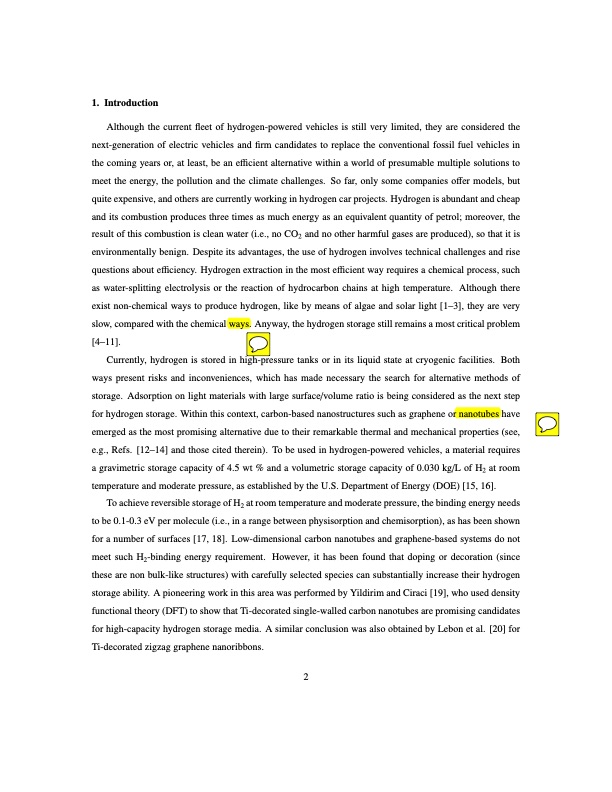
PDF Publication Title:
Text from PDF Page: 004
1. Introduction Although the current fleet of hydrogen-powered vehicles is still very limited, they are considered the next-generation of electric vehicles and firm candidates to replace the conventional fossil fuel vehicles in the coming years or, at least, be an efficient alternative within a world of presumable multiple solutions to meet the energy, the pollution and the climate challenges. So far, only some companies offer models, but quite expensive, and others are currently working in hydrogen car projects. Hydrogen is abundant and cheap and its combustion produces three times as much energy as an equivalent quantity of petrol; moreover, the result of this combustion is clean water (i.e., no CO2 and no other harmful gases are produced), so that it is environmentally benign. Despite its advantages, the use of hydrogen involves technical challenges and rise questions about efficiency. Hydrogen extraction in the most efficient way requires a chemical process, such as water-splitting electrolysis or the reaction of hydrocarbon chains at high temperature. Although there exist non-chemical ways to produce hydrogen, like by means of algae and solar light [1–3], they are very slow, compared with the chemical ways. Anyway, the hydrogen storage still remains a most critical problem [4–11]. Currently, hydrogen is stored in high-pressure tanks or in its liquid state at cryogenic facilities. Both ways present risks and inconveniences, which has made necessary the search for alternative methods of storage. Adsorption on light materials with large surface/volume ratio is being considered as the next step for hydrogen storage. Within this context, carbon-based nanostructures such as graphene or nanotubes have emerged as the most promising alternative due to their remarkable thermal and mechanical properties (see, e.g., Refs. [12–14] and those cited therein). To be used in hydrogen-powered vehicles, a material requires a gravimetric storage capacity of 4.5 wt % and a volumetric storage capacity of 0.030 kg/L of H2 at room temperature and moderate pressure, as established by the U.S. Department of Energy (DOE) [15, 16]. To achieve reversible storage of H2 at room temperature and moderate pressure, the binding energy needs to be 0.1-0.3 eV per molecule (i.e., in a range between physisorption and chemisorption), as has been shown for a number of surfaces [17, 18]. Low-dimensional carbon nanotubes and graphene-based systems do not meet such H2-binding energy requirement. However, it has been found that doping or decoration (since these are non bulk-like structures) with carefully selected species can substantially increase their hydrogen storage ability. A pioneering work in this area was performed by Yildirim and Ciraci [19], who used density functional theory (DFT) to show that Ti-decorated single-walled carbon nanotubes are promising candidates for high-capacity hydrogen storage media. A similar conclusion was also obtained by Lebon et al. [20] for Ti-decorated zigzag graphene nanoribbons. 2PDF Image | Hydrogen storage capacity of Li-decorated borophene

PDF Search Title:
Hydrogen storage capacity of Li-decorated boropheneOriginal File Name Searched:
APSUSC-D-20-15170.pdfDIY PDF Search: Google It | Yahoo | Bing
CO2 Organic Rankine Cycle Experimenter Platform The supercritical CO2 phase change system is both a heat pump and organic rankine cycle which can be used for those purposes and as a supercritical extractor for advanced subcritical and supercritical extraction technology. Uses include producing nanoparticles, precious metal CO2 extraction, lithium battery recycling, and other applications... More Info
Heat Pumps CO2 ORC Heat Pump System Platform More Info
| CONTACT TEL: 608-238-6001 Email: greg@infinityturbine.com | RSS | AMP |